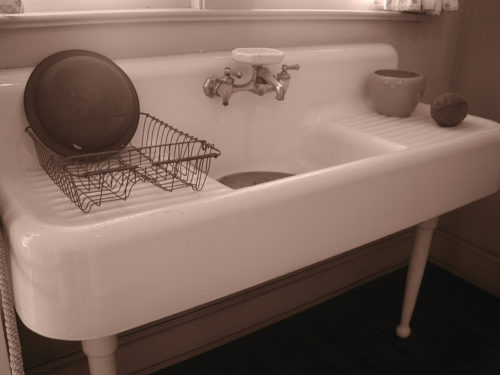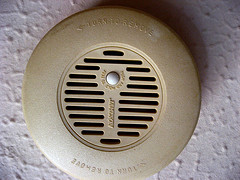More and more, we see homeowners who are investing in their homes because they plan to stay there for the long haul. They want to enjoy living in their homes while they are there, and they see that the investments they make now will lead to an easier sale in the future when they decide it’s time to leave. If you fall into this category, knowing what other people are investing in their homes will help you make good decisions about what to spend on your own.
Make no mistake: cheaper is always going to look cheaper — both to you and to the future buyers of your home. And do not default to “builder beige” just because you think that will improve your home’s future value. It doesn’t. And this isn’t about resale value. It’s about investing in your property so you can enjoy it. When the time does come to sell, the people looking at your home will see a beautiful home, not just another house.
Our company works primarily in older homes in the greater metropolitan Philadelphia area, including sections of Bucks, Montgomery, Delaware County and parts of neighboring New Jersey. We see, time and time again, that homes built prior to 1950 were typically very well made, and they lasted a long time. But, by the time we are called in, we have to rebuild the rooms that kitchens and bathrooms are going into. We are not just popping in new cabinets and paint. You can see examples of full gut kitchen and bathroom remodels we typically do by tapping the “projects images tab” on our web site menu.
Renovations for most project homes we work on fall into five main categories:
1. Smaller, modest kitchens
These rooms (12′ x 12′ or less) are gutted out to the studs, rewired and re-plumbed, followed by the installation of all new floors, ceilings and walls. No walls are moved.
Typically, we will do these projects for landlords or clients with modest budgets.
We select good, hardwearing products like maple cabinets and laminate counters. No big bells and whistles on these projects, but we do try to do something special for each. Typical flooring is tile, cork or hardwood.
These projects average $45,000.
2. Mid-size kitchens
Average 16′ x 18′ or larger
Again, we strip out these old rooms to the studs and original sub-flooring, then we rewire and re-plumb the rooms because the rooms usually need many lights, a circuit breaker for each appliance, and new plumbing locations for the various appliances and sinks.
Typically, we do these rooms for homeowners who plan to stay in their house or sell in a few years.
There are many more upgrades in these kitchens, and typical finishes include stained or painted cabinets, stone or granite counters, stainless appliances, nice tile backsplashes, and high-quality cork, tile or site-finished flooring.
Average project costs $82,000
3. Large kitchens
Average 18′ x 20′ or larger
Again, a total strip out to the studs (see above)
Often, we remove load-bearing walls and create new door or window openings
High-quality cabinetry is installed (custom factory made or bespoke locally made by craftsmen). Typical finishes are stained hardwood or painted wood.
These rooms have more bells and whistles, including high-end appliances from Thermador, Wolf, Viking or Sub Zero.
Average project costs $132,000
4. New powder room additions
No plumbing, wiring or walls exist
We install tile or hardwood floors, low-flow, high-style toilets, attractive lighting and high-quality fixtures
Average $18,000
5. Main bathrooms
These are the main household bathrooms in people’s homes, the ones that get the majority of the use.
These are total tear outs, to the studs and joists, which we typically have to repair for structural damage.
These older bathrooms have a few inches of concrete on the floors and walls, under the tile.
We completely rewire and re-plumb these rooms, often replacing the large radiators with radiant floor heat
High-quality, low-flow toilets, and ceramic tubs and sinks are installed
High-quality wall and floor tiles are installed
High-quality accessories like heavy chrome towel rods and towel warmers are installed
Lighting
Average $56,000
6. Master Bathrooms
These are often very small when we first see them (approx. 8′ x 6′)
To meet modern standards for a master bath, we need to increase their footprint to 8′ x 12′ or more, so we are moving walls and plumbing after we remove the concrete, plaster walls and ceilings.
These rooms get all of the bells and whistles. High-end tile, stone counters, his and hers sinks, shower, tubs, steam rooms, jetted tubs, separate toilet rooms, lots of glass.
Average $84,000 and up
 What makes a great kitchen? It’s a question we answer often in our line of work. To me, kitchens are work places, first and foremost. That goes back to my second job, when I was 17 and working in a commercial kitchen at a surf and turf restaurant in South Jersey. It was there that I came to view kitchens as efficient workspaces where the important business of cooking truly good food gets done. I took many commercial kitchen jobs from then on throughout college at some pretty good restaurants. I typically worked the line, usually as a second or a first line cook. Later, I also did early morning baking on the weekends, which left time for me to go to school and work in an art studio during the week.
What makes a great kitchen? It’s a question we answer often in our line of work. To me, kitchens are work places, first and foremost. That goes back to my second job, when I was 17 and working in a commercial kitchen at a surf and turf restaurant in South Jersey. It was there that I came to view kitchens as efficient workspaces where the important business of cooking truly good food gets done. I took many commercial kitchen jobs from then on throughout college at some pretty good restaurants. I typically worked the line, usually as a second or a first line cook. Later, I also did early morning baking on the weekends, which left time for me to go to school and work in an art studio during the week. 



